Tag: Finnish history
Pauli Kruhse & Antero Uitto: Suomea rajan takana 1918–1944 [Finnish on the other side of the border 1918–1944]
6 August 2009 | Mini reviews, Reviews
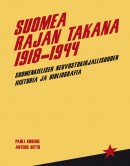 Suomea rajan takana 1918–1944: Suomenkielisen neuvostokirjallisuuden historia ja bibliografia
Suomea rajan takana 1918–1944: Suomenkielisen neuvostokirjallisuuden historia ja bibliografia
[Finnish beyond the border 1918–1944: a history and bibliography of Finnish-language literature in Soviet Union]
Helsinki: BTJ Finland Oy, The Finnish National Library, 2008. 395 p., ill.
ISBN 978-951-692-705-6
€ 49, paperback
The Finnish National Library possesses an impressive collection of Finnish-language literature published in the Soviet Union; the Soviet Karelia Collection contains around 3,800 titles on political and social themes, as well as fiction and poetry. Some of the material was captured from the Soviets during the Continuation War of 1941–1944. The Library has also augmented the collection with material in Finnish, written by Finns or dealing with Finland, which has been published in Russia. Listed in the bibliography are 566 Soviet books published in Finnish and 270 in Karelian, as well as works in private collections – many of these are bibliophilic rarities as a result of the attempt to destroy Finnish identity and the Finnish language in the Soviet Union during Stalin’s purges of 1937–38.
Ruma sota [The ugly war]
11 May 2009 | Mini reviews, Reviews
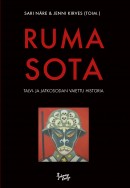 Ruma sota. Talvi- ja jatkosodan vaiettu historia
Ruma sota. Talvi- ja jatkosodan vaiettu historia
[The ugly war. The suppressed history of the Winter and Continuation Wars ]
Toim. [Ed. by] Näre, Sari & Kirves, Jenni
Helsinki: Johnny Kniga, 2008. 468 p., ill.
ISBN 978-951-0-32917-7
€ 39, hardback
The book is about the conflicts associated with the interpretation of the Finnish Winter and Continuation Wars (1939–1944) and the culture of silence which followed them. It argues that the psychological impact of those wars, which shifted from one generation to the next, caused suffering, and that those who had traumatic experiences were left largely alone with their distress. The articles examine children’s experiences of war, the experiences of cowards and deserters, the effects of war on sexual behaviour and drug use, and the impact of propaganda on people’s minds. There is a startling essay on violence at the front line based on the writings of veterans, with photographic archival material. The book also discusses the views of Finnish writers who served in the wars, and the violations of human rights encountered by prisoners of war.
Punamustavalkea – 1918 valokuvissa [Red, black and white: 1918 in photographs]
31 March 2009 | Mini reviews
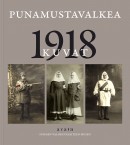 Punamustavalkea – 1918 valokuvissa
Punamustavalkea – 1918 valokuvissa
[Red, black and white – 1918 in photographs]
Toim. [Ed.by] Kukkonen, Jukka & Heikka, Elina
Helsinki: Valokuvataiteen museo /Avain, 2008. 167 p., ill.
ISBN 978-952-5524-65-9
€ 29, paperback
The book examines the Finnish Civil War and the photographic heritage of the year 1918 in articles which explore the background to the conflict. There are photographs of the ‘Red’ and ‘White’ guards, the events of the war, the prison of war camps, and the everyday lives of civilians. The publication presents the work of the photographers and film technicians who supported different sides in the conflict, and discusses the fate of the photographic archives after the war. A previously unknown collection of German propaganda pictures is also included. Archival research has demonstrated that there are more photographs from the period than was originally supposed; after the war they were confiscated and used to trace Red Guard soldiers who had gone missing. The book was published in connection with an exhibition at the Finnish Museum of Photography.
Reima Luoto & al: Suomen sota 1808–1809 [The Finnish War of 1808–1809]
27 March 2009 | Mini reviews
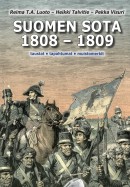 Luoto, Reima T.A. & Talvitie, Heikki & Visuri, Pekka:
Luoto, Reima T.A. & Talvitie, Heikki & Visuri, Pekka:
Suomen sota 1808–1809: taustat, tapahtumat, muistomerkit
[The Finnish War of 1808–1809: background, events, memorials]
Espoo: Fenix-Kustannus, 2008. 260 p., ill.
ISBN 978-951-862-183-9
€ 36, hardback
As a result of the 1808–1809 Russian-Swedish war, Finland, which had until then belonged to Sweden, was annexed to the Russian Empire, and Finland was established as an autonomous grand duchy. In this 200th anniversary year, several books about the war have already appeared. In its introduction, this book examines the birth and development of the idea of Finnish independence from the reign of Sweden’s King Gustav III onwards. Articles in the volume discuss the place of Finland and Sweden in Europe during the period of the Napoleonic war, and in an article which includes a survey of the present day, Finland’s OSCE envoy Ambassador Heikki Talvitie shows how Sweden has consistently adhered to the foreign policy it formed in the year 1812. Finally, there is a presentation of the real and fictional heroes of J.L. Runeberg’s Fänrik Ståls sägner (‘The Tales of Ensign Stål’, 1848–60), and a guide to the monuments in Finland and Sweden which commemorate the war.
Kalevalan kulttuurihistoria [A cultural history of the Kalevala]
16 March 2009 | Mini reviews
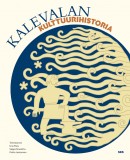 Kalevalan kulttuurihistoria
Kalevalan kulttuurihistoria
[A cultural history of the Kalevala]
Toim. [Ed. by] Piela, Ulla & Knuuttila, Seppo & Laaksonen, Pekka
Helsinki: Finnish Literature Society, 2008. 578 p., ill.
ISBN 978-952-222-007-3
€ 63, hardback
The social and cultural influences exerted by Finland’s national epic, the Kalevala (the versions compiled by Elias Lönnrot were published in 1835, 1849 and 1862), are considerable: a large number of Finnish institutions still use it in their operations and public image. This book, which had its origin in an initiative by the Kalevala Society, takes the reader through Lönnrot’s work as a collector of folk poetry and literary compiler. The authors also discuss the epic’s ideology and its impact on Finnish cultural history. The book has five parts which relate the Kalevala to the arts, with particular reference to the visual arts and music, nationhood, politics, the study of folk poetry, and the parallelism of repetition. There are subjects included which have not previously featured in academic research, such as interpretations of the Kalevala in popular culture.
Tuomas Hoppu: Tampereen naiskaarti. Myytit ja todellisuus [The Tampere Women’s Guard. Myth and reality]
16 March 2009 | Mini reviews
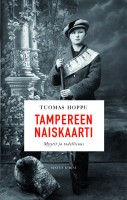 Tampereen naiskaarti. Myytit ja todellisuus.
Tampereen naiskaarti. Myytit ja todellisuus.
[The Tampere Women’s Guard. Myth and reality]
Helsinki: Ajatus Kirjat, 2008. 272 p., ill.
ISBN 978-951-20-7759-1
€ 34, hardback
Several thousand women took part in the battles of the 1918 Finnish Civil War, though not all were involved in the actual fighting. At full strength, the Tampere Women’s Guard numbered about 270 people, and it consisted primarily of industrial workers. Historian Dr Tuomas Hoppu has studied the fates of these women with the help of archival material and accounts by people who were alive at the time. Hoppu also describes the post-war period: the political trials of women, the conditions in the prison camps where the women were held, and the difficulties they encountered in returning to civilian life. According to Hoppu, the members of the women’s guard were genuine volunteers, while men were often forced to join the Reds under duress.
Mothers and sons
Issue 1/2008 | Archives online, Fiction, Prose
Extracts from Helvi Hämäläinen’s novel Raakileet (‘Unripe’, 1950. WSOY, 2007)
In front of the house grew a large old elm and a maple. The crown of the elm had been destroyed in the bombing and there was a large split in the trunk, revealing the grey, rotting wood. But every spring strong, verdant foliage sprouted from the thick trunk and branches; the tree lived its own powerful life. Its roots penetrated under the cement of the grey pavement and found rich soil; they wound their way under the pavement like strong, dark brown forearms. Cars rumbled over them, people walked, children played. On the cement of the pavement the brightly coloured litter of sweet papers, cigarette stubs and apple cores played; in the gutter or even in the street a pale rubber prophylactic might flourish, thrown from some window or dropped by some careless passer-by.
The sky arched blue over the six-and seven-storey buildings; in the evenings a glimmer could be seen at its edges, the reflection of the lights of the city. A group of large stone buildings, streets filled with vehicles, a small area filled with four hundred thousand people, an area in which they were born, died, owned something, earned their daily bread: the city – it lived, breathed….
Six springs had passed since the war…. Ilmari’s eyes gleamed yellow as a snake’s back, he took a dance step or two and bent over Kauko, pretending to stab him with a knife. More…
No place to go
Issue 1/2008 | Archives online, Fiction, Prose
Extracts from the novel Lakanasiivet (‘Linen wings’, Otava, 2007)
The clothesline swayed in the wind. Helvi closed her eyes and felt herself flutter into the air with the laundry. She flapped her white linen wings, straining higher, now seeing below the whole small peninsula city, its damp rooftops glittering in the morning sun, the blue sighs of the chimneys, the steamboats toiling on the lake and the trains chugging on their tracks. The whole of heaven was clear and blue; only far off in the east were there white pillars roiling – whether smoke or clouds, Helvi could not tell.
She flew north on her linen wings and saw the great bridges leading to the city, on whose flanks the hidden anti-aircraft batteries gasped the fumes of gun oil and iron, and continued her journey over the land, following the straight lines of the telephone wires. She flew over wooded hills and deep green fields, finally arriving on the slope of the great hill where her daughter now lived, in hiding from the war. More…
Conversations with a horse
Issue 4/2004 | Archives online, Fiction, Prose
Extracts from the novel Kiinalainen puutarha (‘The Chinese garden’, Otava, 2004). Introduction by Anna-Leena Nissilä
Colonel Mannerheim.
Near Kök Rabat, on the caravan route between Kashgar and Yarkand.
October 1906
It is growing dark. Let the others go on ahead. Let us wait here awhile. Perhaps the pain will go over. We’ll get through.
Steady, Philip.
You always obey. And listen. Your ears proudly, handsomely pricked.
Steady, I said, there in the garden. No reaction. Everyone was moving. Pure comedy. And something else.
An illusion, two girls. Then gone.
How to explain.
Before that. I had a conversation with Macartney, the British chargé d’affaires…
Pain…. It burns, now it burns again. Let us wait now, Philip. Steady, steady now. More…
Wolf-eye
Issue 2/2004 | Archives online, Fiction, Prose
Extracts from the novel Käsky (‘Command’, WSOY, 2003). Introduction by Jarmo Papinniemi
Only once he had led the woman into the boat and sat down in the rowing seat did it occur to Aaro that it might have been advisable to tie the woman’s hands throughout the journey. He dismissed the thought, as it would have seemed ridiculous to ask the prisoner to climb back up on to the shore whilst he went off to find a rope.
It was a mistake.
After sitting up all night, being constantly on his guard was difficult. Sitting in silence did not help matters either, but they had very few things to talk about. More…

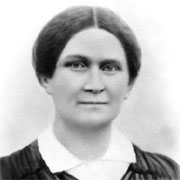
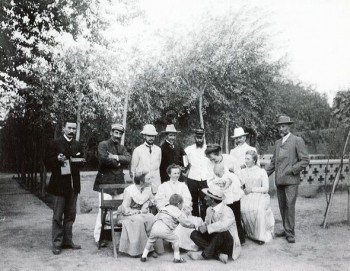

 For an extraordinary period between 1944 and 1956 part of Finland – the Porkkala peninsula, close to Helsinki – was leased to the Soviet Union as a military base. Inspired by the photographs by Jan Kaila, Olli Jalonen explores those silenced and mysterious years, which prompted Finns to ask the question: what if the whole of Finland had succumbed to the same fate?
For an extraordinary period between 1944 and 1956 part of Finland – the Porkkala peninsula, close to Helsinki – was leased to the Soviet Union as a military base. Inspired by the photographs by Jan Kaila, Olli Jalonen explores those silenced and mysterious years, which prompted Finns to ask the question: what if the whole of Finland had succumbed to the same fate?